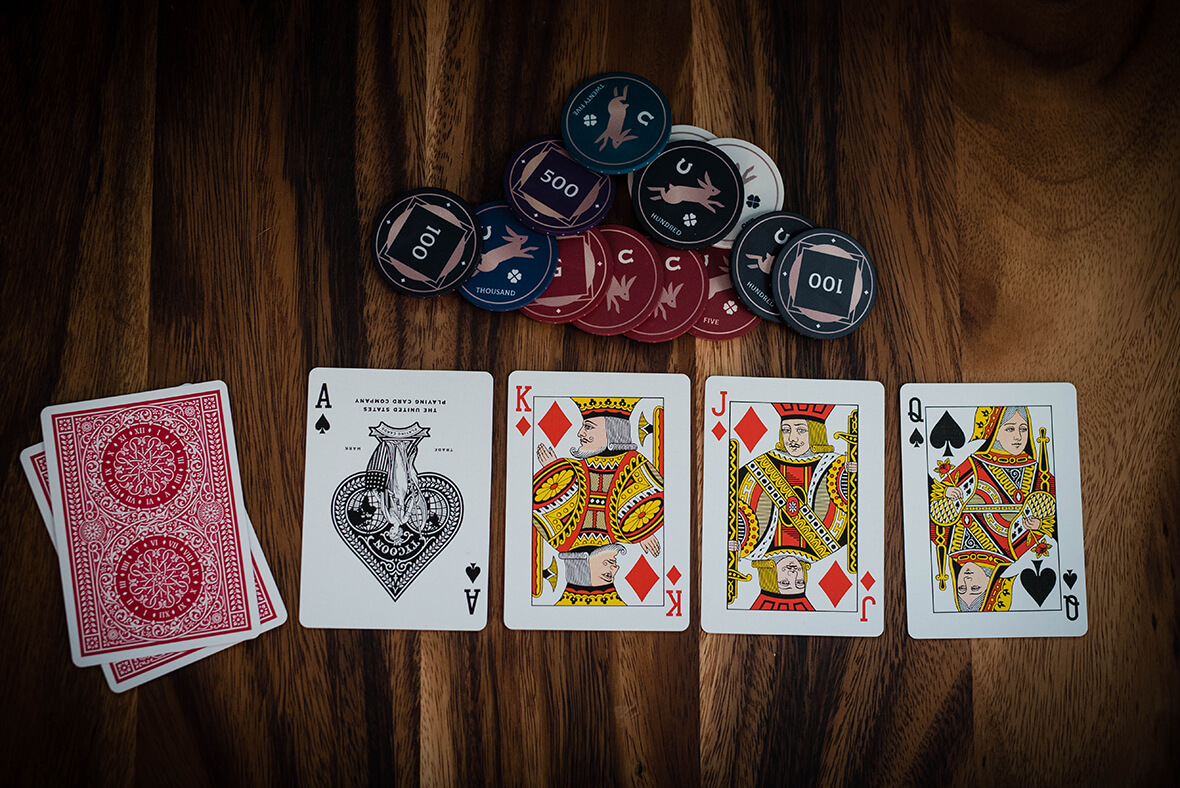Blackjack Basic Strategy Guide – How to Play Blackjack

Blackjack is one of the most popular casino games, combining skill and luck. Understanding basic strategy is essential for increasing your chances of winning and minimizing the house edge. In this guide, we’ll walk you through how to play blackjack and the key components of blackjack basic strategy.
Objective of Blackjack
The goal of blackjack is simple: get a hand value as close to 21 as possible without exceeding it. You’re playing against the dealer, not other players, and your objective is to have a higher hand value than the dealer.
- Aces can be worth 1 or 11.
- Face cards (King, Queen, Jack) and 10s are worth 10 points.
- Other cards are worth their face value.

The Basic Gameplay of Blackjack
- Place Your Bet: You begin by placing a bet on the table. After all bets are placed, the dealer gives two cards to each player and two to themselves. One of the dealer’s cards is face-up (the “upcard”), and the other is face-down (the “hole card”).
- Player’s Turn: Starting from the left, players take turns deciding whether to “hit” (take another card) or “stand” (keep their current hand). You can also choose other options like “double down” (double your bet and take one more card) or “split” (if you have two cards of the same value, you can split them into two hands).
- Dealer’s Turn: After all players have finished, the dealer reveals their hole card. If the dealer’s hand totals 17 or higher, they must stand. If their hand totals 16 or lower, they must hit. Some casinos require the dealer to hit on a “soft 17” (a hand containing an Ace counted as 11, such as Ace-6).
- Winning or Losing: If your hand is closer to 21 than the dealer’s, you win. If your hand exceeds 21, you bust and lose your bet. If the dealer busts, any remaining players win.
Basic Blackjack Strategy
Blackjack is a game of strategy, and using basic strategy can help you make the best decisions based on your hand and the dealer’s upcard. The key decisions are whether to hit, stand, double down, or split.
1. When to Hit or Stand
- Hit if your hand is below 12, or if you have a “soft” hand (an Ace + 2-6), and you need more points.
- Stand if your hand is 17 or higher, or if you have a “hard” hand (without an Ace) of 12 or higher, especially when the dealer has a weak upcard (2-6).
| Your Hand | Dealer’s Upcard | Strategy |
|---|---|---|
| 8 or lower | Any | Hit |
| 9 | 3-6 | Double down, otherwise hit |
| 10 | 2-9 | Double down, otherwise hit |
| 11 | Any | Double down |
| 12-16 | 2-6 | Stand |
| 17+ | Any | Stand |
2. When to Double Down
Doubling down is a powerful option that lets you double your bet in exchange for agreeing to receive only one more card. It’s a great strategy when you have a strong hand and the dealer’s upcard is weak.
- Double down when you have a 10 or 11, especially when the dealer has a 2-9 upcard.
- Soft 16, 17, or 18 (Ace + 5, Ace + 6, or Ace + 7) should generally be doubled against a dealer’s 2-6 upcard.
3. When to Split
Splitting allows you to split a pair into two separate hands and play them individually. Each new hand gets an additional card, and you must make a new bet for the second hand.
- Split Aces: Always split Aces. A pair of Aces gives you a good chance of hitting a 10 or face card, and it’s one of the best hands you can have.
- Split 8s: Always split a pair of 8s. A hand of 16 is one of the worst hands to hold, but splitting 8s gives you a better chance of improving your hand.
- Never split 10s or 5s: 10s give you a strong hand of 20, and 5s give you a total of 10, which is a great hand to double down on.
| Pair | Dealer’s Upcard | Strategy |
|---|---|---|
| Aces | Any | Split |
| 8s | Any | Split |
| 10s | Any | Don’t split |
| 5s | 2-9 | Double down, otherwise hit |
4. When to Surrender
Some casinos offer a surrender option, where you can forfeit your hand and get half your bet back. This is a good option when you have a weak hand and the dealer has a strong upcard.
- Surrender if you have a 16 (hard) and the dealer has a 9, 10, or Ace showing. The dealer is likely to have a strong hand, and surrendering minimizes your losses.
